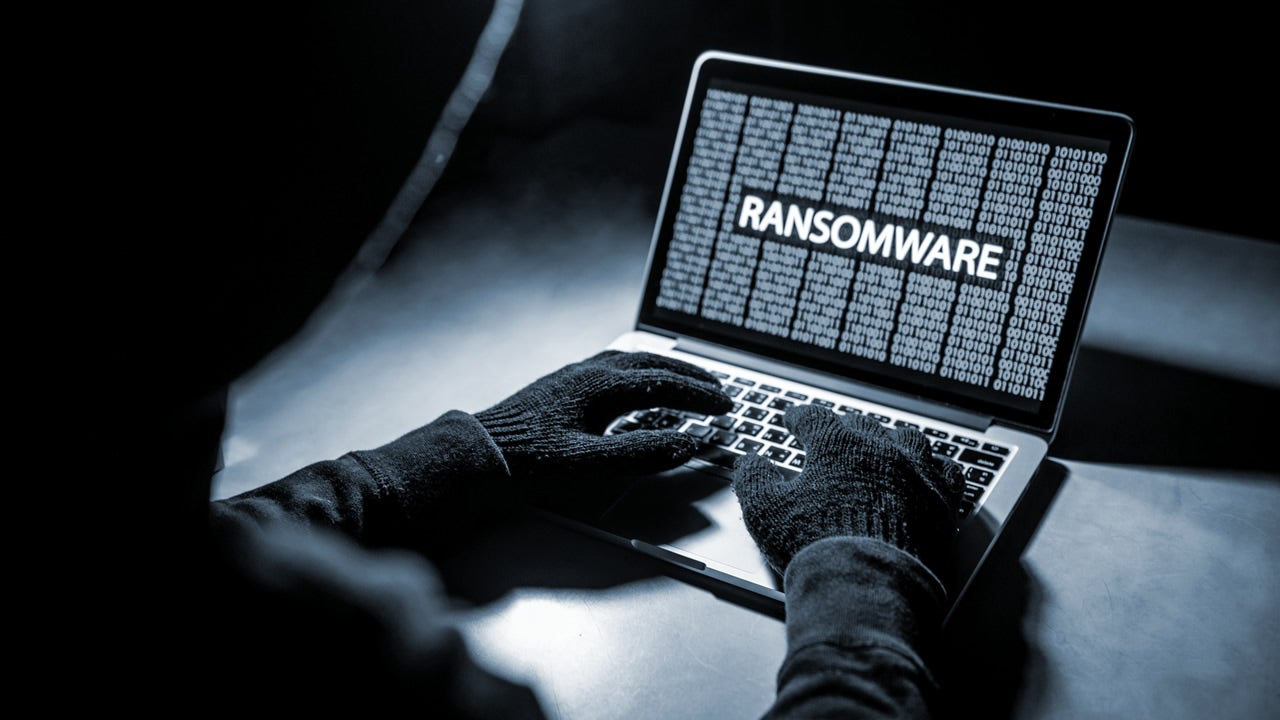Learn
Ransomware Detection: Techniques and Best Practices
Modern ransomware detection requires a multi-layered approach that combines behavioral analysis, network monitoring, and automated response capabilities.
How to detect ransomware activity: Finding breaches
Cybersecurity Ventures predicts that a ransomware attack will strike a consumer or business every 2 seconds by 2031, with the average incident costing businesses $4.4 million in 2025. These attacks have evolved beyond simple encryption schemes into sophisticated operations that combine data theft, operational sabotage, and psychological warfare against victims.
Modern ransomware detection requires a multi-layered approach that combines behavioral analysis, network monitoring, and automated response capabilities. Success depends on recognizing attack patterns early, from initial compromise through lateral movement, before encryption begins and data exfiltration occurs.
What Is Ransomware Detection?
Ransomware detection encompasses the technologies, processes, and practices designed to identify malicious encryption activities before they compromise critical data. The primary goal extends beyond simply spotting known ransomware signatures; effective detection must identify behavioral anomalies, unusual network traffic patterns, and early indicators of compromise that precede encryption events.
Attack methods fall into two distinct categories that require different detection approaches. Common attacks leverage phishing emails and exploit unpatched vulnerabilities. Advanced methods employ double extortion tactics, where attackers both encrypt and exfiltrate data. These sophisticated operations often involve supply chain compromises, living-off-the-land techniques, and targeted attacks against backup systems.
How to Detect Ransomware
Early breach detection starts with monitoring file system activity for rapid modifications across multiple files, unexpected encryption patterns, and suspicious file extensions. Account activity monitoring focuses on detecting privilege escalation attempts, unusual login times or locations, and rapid access to multiple systems that deviate from normal user behavior.
Behavior-based analysis serves as the foundation for catching ransomware before encryption begins. This approach identifies processes attempting to access large numbers of files sequentially, applications generating unusual amounts of network traffic, and programs attempting to delete shadow copies or disable security tools. Modern behavioral analysis can detect unknown ransomware variants by recognizing these universal attack patterns.
Security log analysis reveals critical early warning signs through failed authentication attempts, especially against administrative accounts, unexpected service installations, and unusual PowerShell or command-line activity. Organizations should monitor for Event ID 4625 (failed logons), Event ID 4720 (new user account creation), and Event ID 7045 (new service installation) as potential indicators of compromise.
When suspicious activity is detected, immediate isolation helps prevent lateral movement. This involves disconnecting affected systems from network shares, disabling user accounts showing anomalous behavior, and blocking suspicious IP addresses at the firewall level. Speed matters: Ransomware can encrypt thousands of files per minute once activated.
The following methods represent the core approaches to detecting ransomware activity:
- Signature-based detection: Matches known ransomware samples against a database of malware signatures.
- Heuristic/behavioral analysis: Identifies ransomware based on actions and suspicious patterns rather than signatures.
- Anomaly detection: Establishes baseline behavior and alerts on deviations.
- File integrity monitoring: Tracks changes to critical files and system configurations.
- Network traffic analysis: Monitors for command-and-control communications and data exfiltration.
- Honeypots and deception: Creates fake resources to detect and trap attackers.
Ransomware Detection Methods Comparison
This table compares the primary ransomware detection methods and their application scenarios:
| Detection Method | Strengths | Weaknesses | Use Case Example |
| Signature-based | Fast, low false positives | Ineffective for unknown strains | Antivirus/anti-malware |
| Behavior-based (Heuristic) | Detects new/unknown ransomware | May trigger false positives | EDR/XDR platforms |
| Anomaly detection | Catches novel threats | Requires good baseline, can be noisy | SIEM/ML-based tools |
| Honeypots/deception | Early warning, high fidelity | Needs careful deployment | Network/file share honeypots |
Suggested Best Practices for Ransomware Defense
Multi-factor authentication (MFA) stands as the first line of defense. Organizations should enforce MFA across all accounts, particularly for administrative access, VPN connections, and email systems. The Snowflake incidents demonstrate the critical nature of this control.
Patch management directly correlates with ransomware prevention success. Vulnerabilities in public-facing applications, particularly VPNs and remote access tools, provide initial entry points for attackers. Organizations should prioritize patching based on exploit availability and implement automated patch deployment for critical security updates.
Security awareness training addresses the human element. Training should include recognizing suspicious emails, verifying unexpected requests through secondary channels, and reporting potential incidents immediately. Regular phishing simulations help measure training effectiveness and identify users requiring additional support.
Backup strategies require careful planning to withstand targeted attacks. Secure backups should be immutable, to help prevent modification even with administrative credentials, stored offline or air-gapped to help prevent network-based attacks, and tested regularly through full restoration exercises. Organizations should maintain multiple backup copies across different media types and geographic locations.
The principle of least privilege can limit damage potential by restricting user access to only necessary resources. This includes implementing role-based access controls, requiring approval workflows for privilege elevation, and conducting regular access reviews to remove unnecessary permissions.
The following strategies can provide additional layers of defense against ransomware attacks:
- Layer detection tools across endpoints, network, and cloud environments. Deploy endpoint detection & response (EDR) on all endpoints, network detection and response at perimeter and internal segments, and cloud-native security for SaaS applications.
- Keep systems and security tools updated to catch the latest ransomware variants. Maintain current threat intelligence feeds, update detection signatures daily, and participate in industry threat-sharing programs.
- Regularly review detection rules and tailor behavior analytics to your environment. Customize detection thresholds based on normal business operations, create exceptions for legitimate administrative tools, and adjust rules based on false positive rates.
- Utilize threat intelligence feeds to enhance detection with real-time ransomware indicators of compromise (IoCs). Subscribe to commercial and open source threat feeds, automate IoC ingestion into security tools, and correlate internal telemetry with external threat data.
Techniques for Enhancing Ransomware Detection and Response
Network segmentation creates defensive boundaries that help contain ransomware spread. Effective segmentation separates user workstations from servers, isolates critical systems like domain controllers and backup servers, and implements east-west firewalling between network segments. Organizations can use VLANs, software-defined networking, or microsegmentation to create these boundaries.
Ongoing monitoring with ML-based anomaly detection can identify subtle attack indicators that rule-based systems miss. ML algorithms can establish baseline behavior for users, applications, and network traffic, then alert on statistically significant deviations. These systems help detect zero-day ransomware variants and insider threats.
Automated incident response workflows can reduce response time from hours to seconds. Automation can isolate infected endpoints, disable compromised user accounts, block malicious IP addresses and domains, and initiate forensic data collection. Other techniques and tools include:
- Endpoint detection & response: EDR platforms provide deep visibility into endpoint activities, capturing process creation, file modifications, network connections, and registry changes. Modern EDR solutions use behavioral analysis to detect ransomware-like activities and can automatically isolate endpoints showing signs of compromise.
- Extended detection & response: XDR platforms can correlate data across endpoints, networks, cloud workloads, and email systems. This view enables detection of complex attack chains that span multiple systems and provides unified incident response capabilities across the environment.
- Security information & event management: SIEM systems aggregate and analyze log data from across the infrastructure. For ransomware detection, SIEM platforms can correlate indicators like failed authentication attempts followed by successful logins, unusual data transfers, and security tool tampering.
- Native OS protections: Operating systems include built-in ransomware protections like Windows Defender’s controlled folder access and behavior monitoring. These native tools provide baseline protection and integrate with enterprise security platforms for centralized management.
- Specialized anti-ransomware tools: Purpose-built anti-ransomware solutions focus specifically on detecting and preventing encryption attacks. These tools use techniques like file system monitoring, decoy files, and encryption detection algorithms optimized for ransomware behavior.
How to Detect Ransomware on a Network
Network-level detection focuses on identifying ransomware communication patterns and lateral movement. Security teams should monitor for unusual SMB/CIFS traffic volumes indicating file enumeration, spike in DNS queries suggesting domain generation algorithm activity, and outbound connections to known command-and-control infrastructure. Data exfiltration attempts manifest as large data transfers to cloud storage services, encrypted traffic to unusual destinations, and connections during non-business hours.
Network sensors positioned at strategic points can provide visibility into east-west traffic. These sensors should trigger alerts on rapid file access patterns across network shares, detection of known ransomware signatures in network traffic, and identification of encryption activities through entropy analysis. Proper sensor placement includes network perimeters, between network segments, and at data center boundaries.
Integration of multiple data sources can create comprehensive visibility. SIEM and XDR platforms can correlate endpoint telemetry showing process anomalies, network data revealing lateral movement patterns, and authentication logs indicating credential abuse. This correlation enables detection of multi-stage attacks that individual tools might miss.
Case Study: Bilthoven Biological’s Rapid Ransomware Recovery
On September 21, 2022, Bilthoven Biologicals (BBio), a pharmaceutical company, discovered it was under ransomware attack when users reported inability to access files. IT Consultant Paul Vries found ransom notes demanding payment for file decryption, signaling a serious breach.
“The ransomware spread through the domain field and the factory. Basically, everything connected to the Active Directory was compromised,” Vries said. The attack threatened BBio’s vaccine production operations, requiring immediate containment measures to limit the damage.
The response team disconnected the network, shut down infected servers and virtual machines while strategically keeping unaffected systems operational to minimize production impact. It also prioritized clear employee communication about the situation’s criticality.
By the second day, the team successfully restored the Active Directory and backup environment. “We love the simplicity of the Commvault dashboard. With just a few clicks, we can restore a virtual machine or backups after an attack which is vital in our line of work as a pharmaceutical company with very sensitive data,” Vries explained.
The intuitive interface allowed team members to work in shifts throughout the night, methodically restoring services. Through collaboration between BBio’s IT team, its managed service provider KEMBIT, and Commvault, it fully restored operations across multiple offices and a factory in just nine days.
The experience prompted BBio to strengthen its disaster recovery planning. “We didn’t have a recovery plan in place before the attack,” Vries noted. “We are now working with Commvault to build a disaster recovery plan so we know better what is important to get up and running first, and in what order.”
BBio also implemented additional protective measures, including moving media agents outside the domain and adopting Commvault Cloud Air Gap Protect to enhance its hybrid environment protection. “With Commvault and Commvault Cloud Air Gap Protect, we can easily manage, protect, and recover data in the cloud and on-premises, even in the worst-case scenario,” said Vries.
Commvault Support for Ransomware Detection
Commvault’s approach to ransomware protection combines proactive threat detection with automated recovery capabilities. The platform’s Threat Scan Predict leverages AI-driven threat detection to identify potential ransomware activity before encryption begins, analyzing backup data patterns and file changes across hybrid environments.
The platform is designed to detect ransomware signatures and anomalies through ongoing monitoring of backup streams, file entropy analysis, and behavioral pattern recognition. When suspicious activity is detected, automated workflows can instantly create isolated backup copies, alert security teams, and initiate investigation procedures. This early warning system helps organizations respond before ransomware can spread across the infrastructure.
The unified data management approach enhances both compliance and business continuity through immutable audit trails, automated retention policies, and encryption of data at rest and in transit. During recovery operations, granular restore capabilities help minimize data loss while automated orchestration helps reduce recovery time.
Related Terms
Ransomware protection
A process of preventing ransomware events and mitigating the risk of successful attacks through security measures, backups, and recovery strategies.
Ransomware protection
A process of preventing ransomware events and mitigating the risk of successful attacks through security measures, backups, and recovery strategies.
Air gap backup
A backup system that is physically isolated from the main network, creating a protective gap that helps prevent ransomware from accessing backup data.
Air gap backup
A backup system that is physically isolated from the main network, creating a protective gap that helps prevent ransomware from accessing backup data.
Cleanroom Recovery
A specialized recovery process that enables secure retrieval of critical data in an isolated environment free from malware contamination.
Cleanroom Recovery
A specialized recovery process that enables secure retrieval of critical data in an isolated environment free from malware contamination.

Ransomware Reversal

Ransomware 101
